This is an after-action report about a meetup with the Malmö Ruby Brigade.
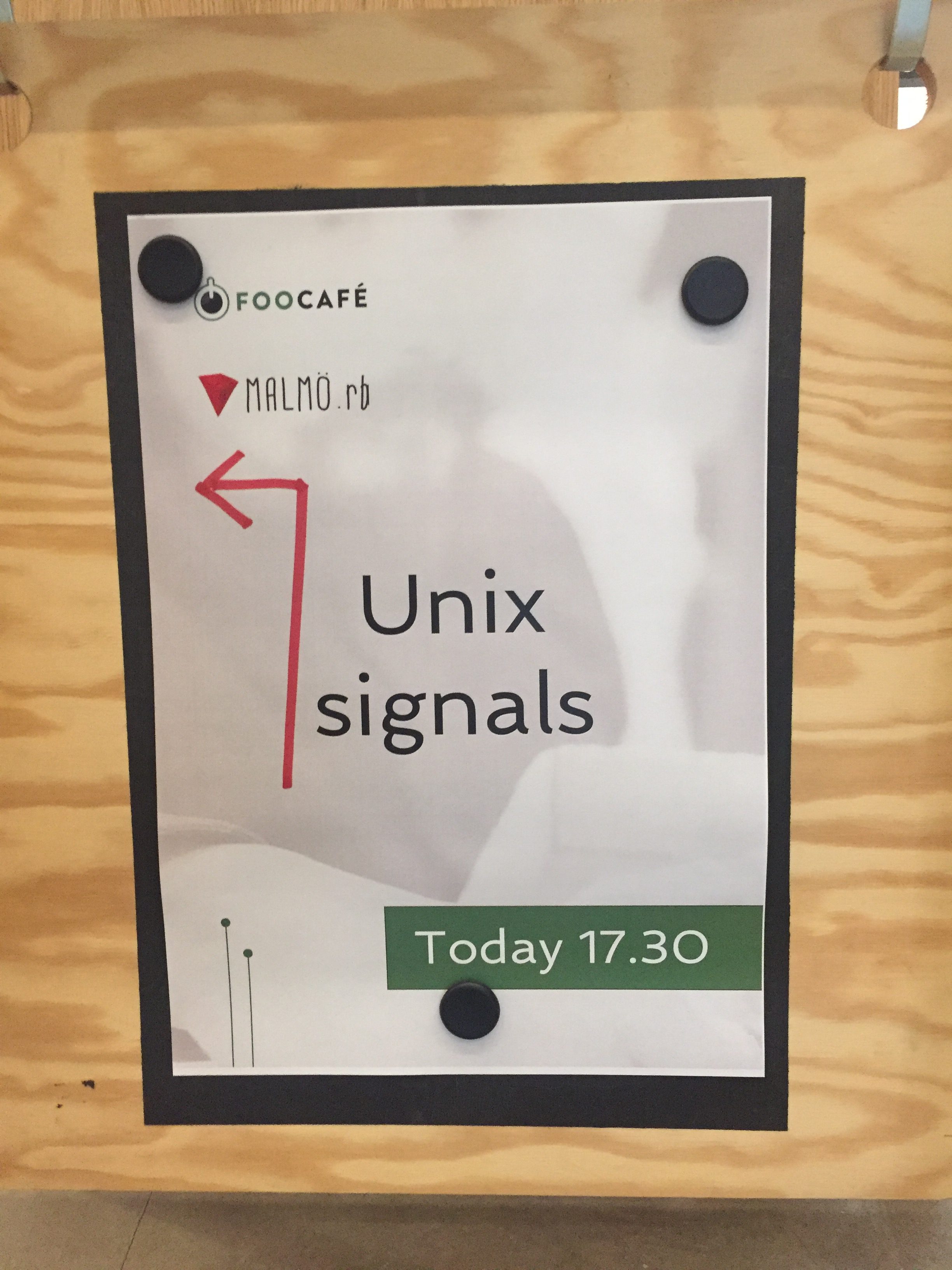
Yesterday, I had the great pleasure of introducing my friends, new and old, of Malmö.rb to the presenters of the day. We convened, as always, at FooCafe, which is a “conference which is on every day”.
I had been stressing about logistics, trains were running late, and people were filtering in, finding the room. People were giddy, and did not seem to mind the event starting later; they were ogling the amazing boxes which were on the tables at the front. After the flood of text messages to make this happen, this was now… happening.
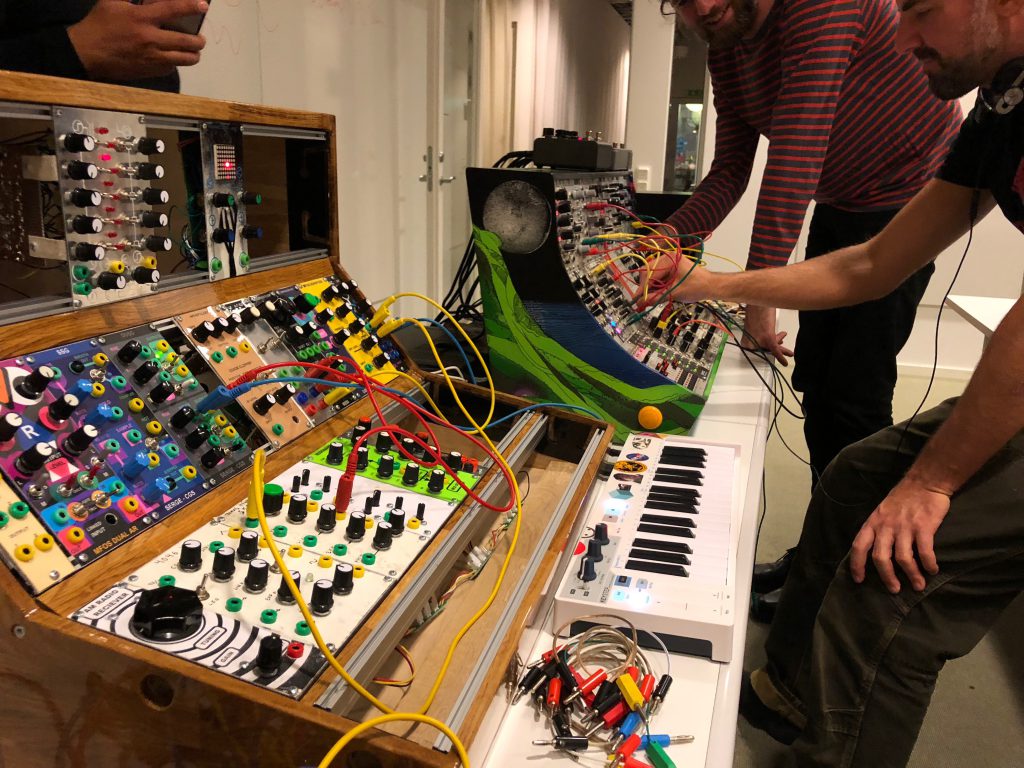
First, as I had requested, Stephen from Copenhagen.rb ran a clear and wonderful set of code examples of using UNIX signals in Ruby programs. It was a strong introduction to the topic.
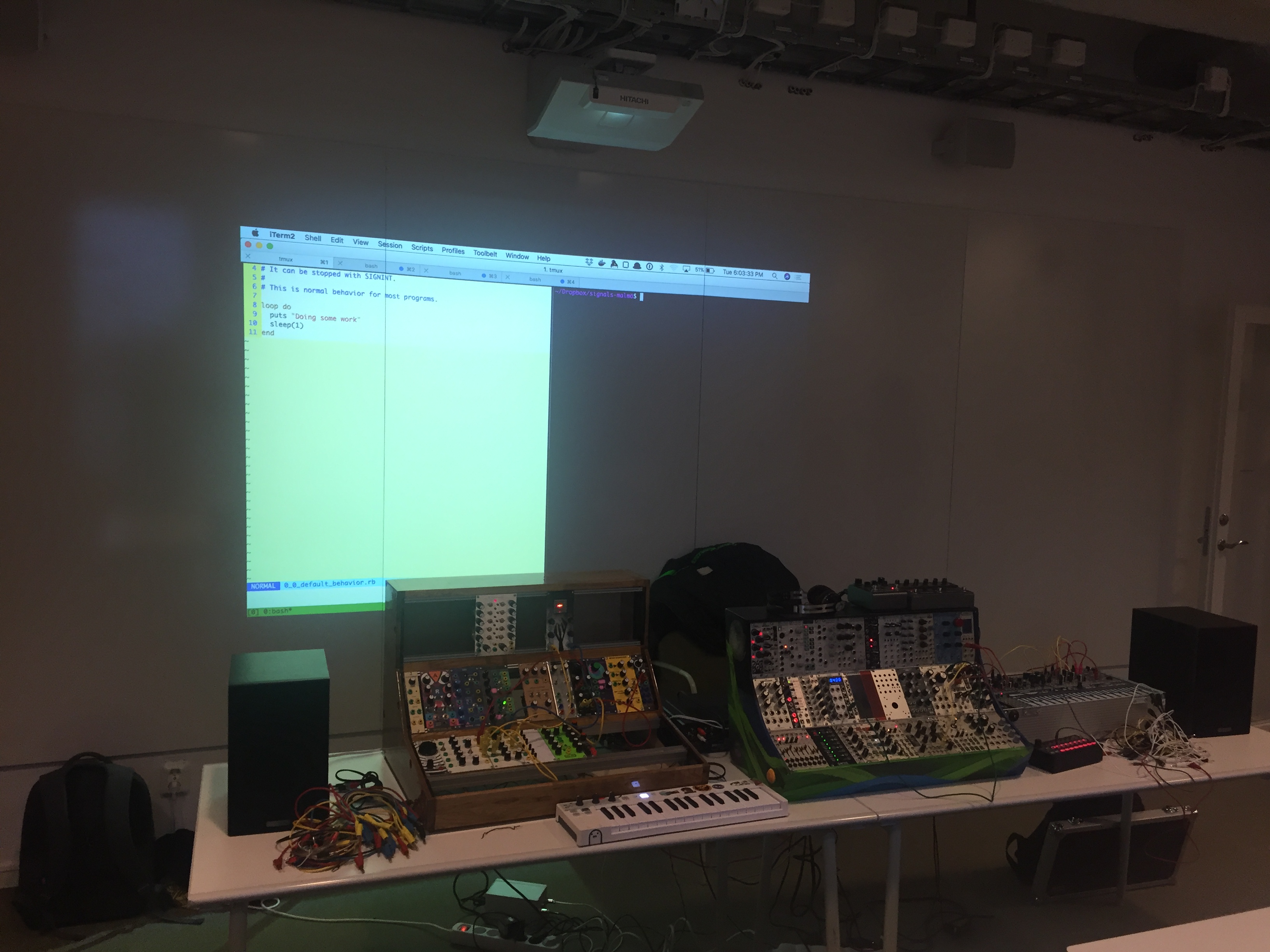
There were at least two new faces at the meetup, and I had been given a hint by Morgan about the article Breaking Cliques at Events. In it, a method for reminding people that the longer they’ve been in a group, the more responsibility they have to welcome newcomers to it: “Take the number of years you’ve been in the group. That number is how many new people you say hello to at a meetup.”
When the tech talk was done, I asked Niklas, Christian and Philip to talk about the synthesizer hobby/life-style. “Do you want me to explain the 60s?” And I said: “I don’t care about what happened in the 60s, I’m curious about how you came to begin with this!”
Personal anecdotes, and good perspectives on being an explorer of sound were followed by a pretty intense diagramming of a so-called “patch”. A patch is a set of configuration of modules, and Philip used the whiteboard wall to draw while explaining. (“Wait, is that a whiteboard pen? – Uh, yes. Is this a whiteboard?”)
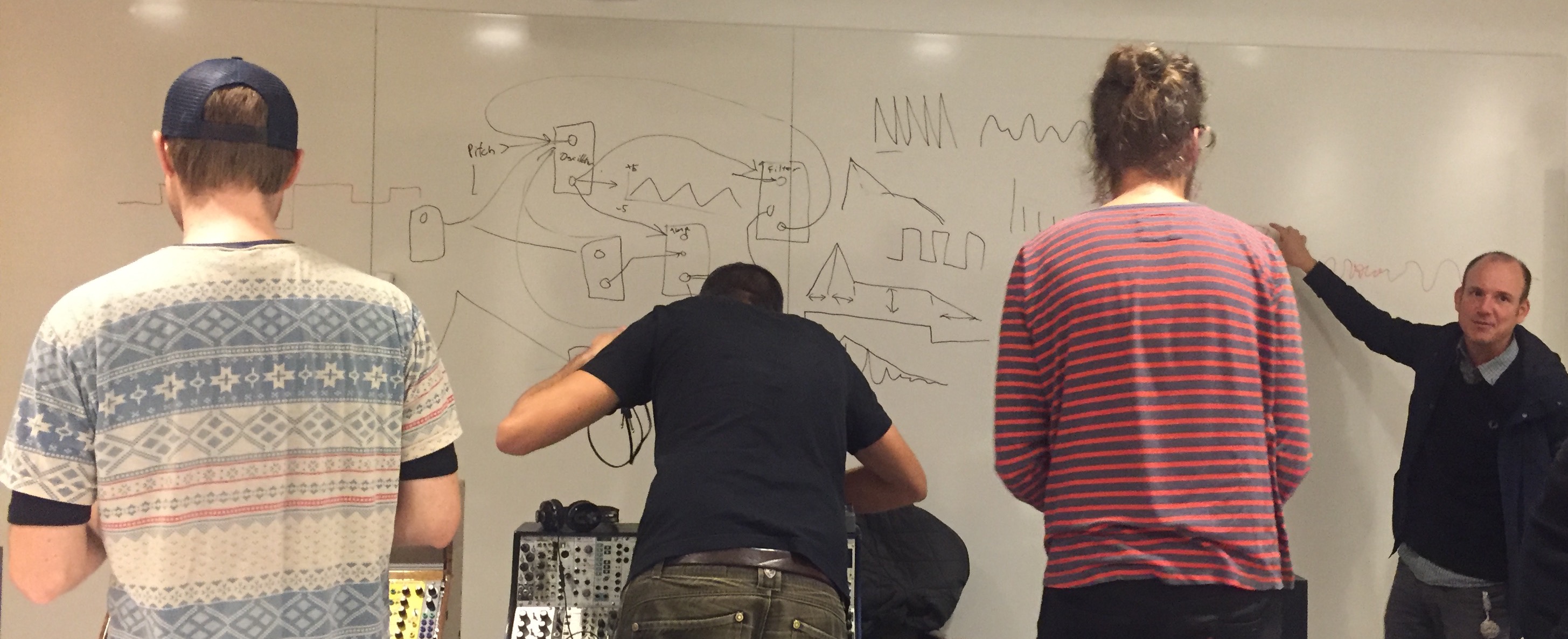
The connections on the synths is done using cables. The cables connect inputs and outputs on modules. The voltages on the cables control.. things. Each connection does something. Without names for the connections – in programming, in contrast, most everything is named – it’s possible to do things, and not recall afterwards how a configuration came to be. A cognitive ceiling.
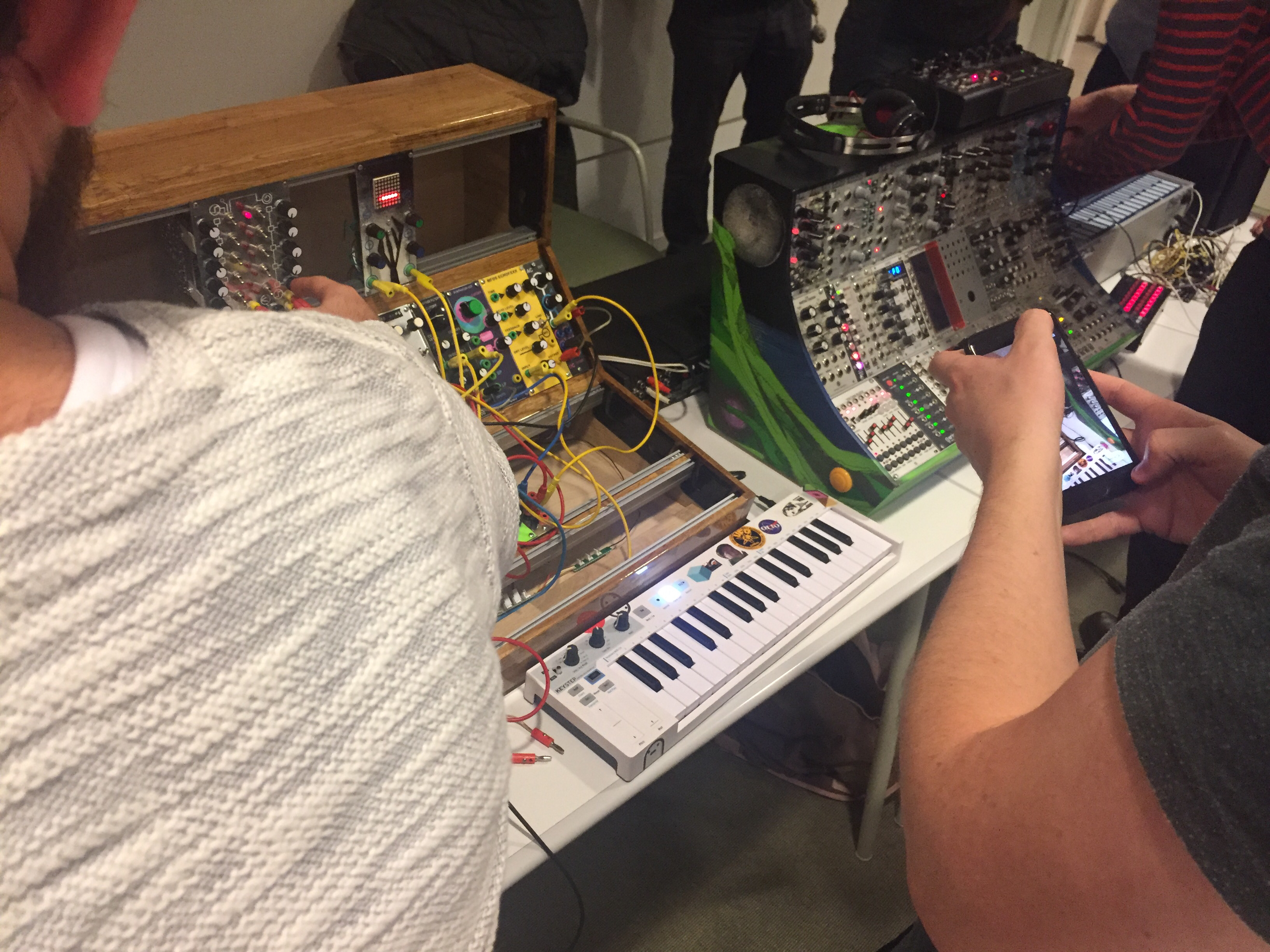
When the presentation of concept was finished, we had a pizza break – thanks, FooCafe! – and then went on to turn knobs and move cables on our own. The operators explained what was going on at all times, which gave me a lot of respect for their craft: modeling the signal at all times, what it “does now”, is a big task.
Well, if you took any pictures of this event, I’d be happy to add them to this place.
Resources
Wikipedia’s entry on Modular Synth has pictures, histories, links, etc. All the things about the Sixties that I wanted to keep out of this more hands-on workshop.
Malmö.rb homepage has contact information for the group.
I usually tag content with the #malmorb hashtag.
This Article was mentioned on ruk.ca